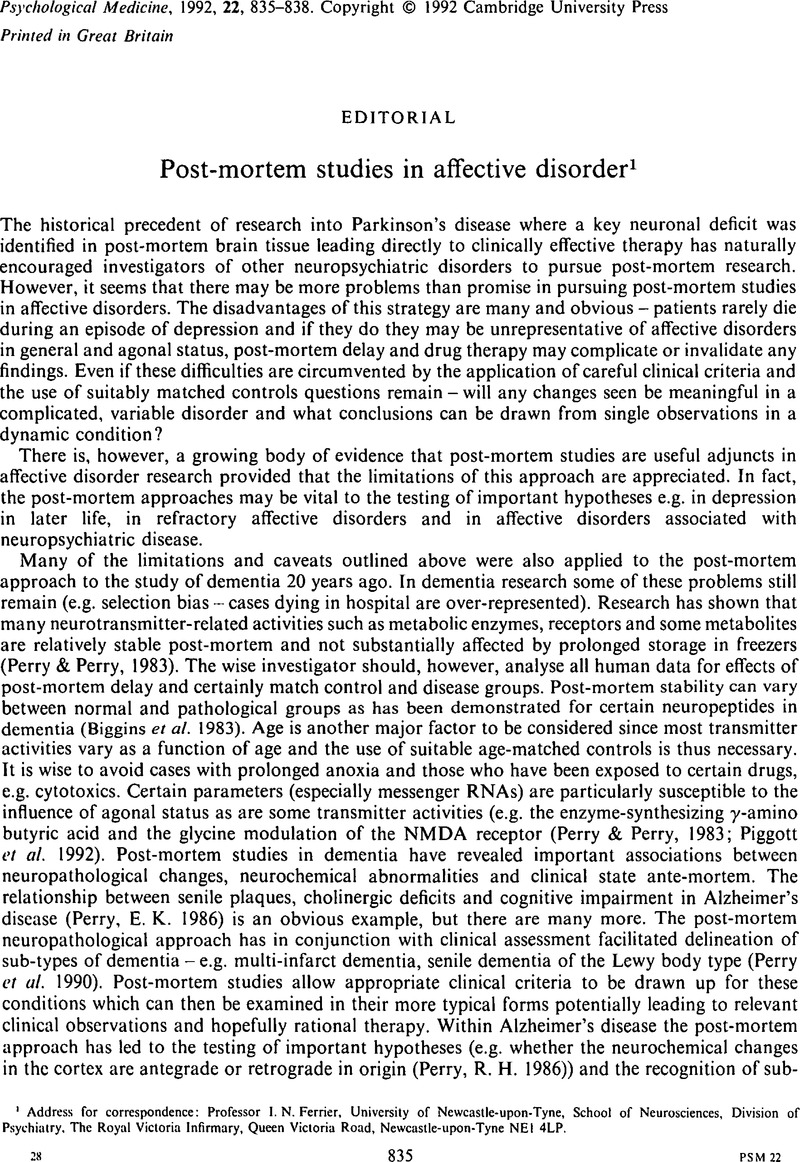Crossref Citations
This article has been cited by the following publications. This list is generated based on data provided by Crossref.
Harvey, I.
Persaud, R.
Ron, M. A.
Baker, G.
and
Murray, R. M.
1994.
Volumetric MRI measurements in bipolars compared with schizophrenics and healthy controls.
Psychological Medicine,
Vol. 24,
Issue. 3,
p.
689.
Baldwin, R.C.
1994.
Is there a distinct subtype of major depression in the elderly?.
Journal of Psychopharmacology,
Vol. 8,
Issue. 3,
p.
177.
1995.
Clinical Neuropsychology.
p.
381.
Norris, Shannon D.
Krishnan, K.Ranga Rama
and
Ahearn, Eileen
1997.
Structural changes in the brain of patients with bipolar affective disorder by MRI: A review of the literature.
Progress in Neuro-Psychopharmacology and Biological Psychiatry,
Vol. 21,
Issue. 8,
p.
1323.
Young, A.H.
Hughes, J.H.
and
Ashton, C.H.
2000.
Brain 5-HT function in bipolar affective disorder.
Acta Neuropsychiatrica,
Vol. 12,
Issue. 3,
p.
91.
Hughes, J. H.
Dunne, F.
and
Young, A. H.
2000.
Effects of acute tryptophan depletion on mood and suicidal ideation in bipolar patients symptomatically stable on lithium.
British Journal of Psychiatry,
Vol. 177,
Issue. 5,
p.
447.
Akunne, H.C
Zoski, K.T
Whetzel, S.Z
Cordon, J.J
Brandon, R.M
Roman, F
and
Pugsley, T.A
2001.
Neuropharmacological profile of a selective sigma ligand, igmesine: a potential antidepressant.
Neuropharmacology,
Vol. 41,
Issue. 1,
p.
138.
Pearlson, G. D.
2002.
The Postmortem Brain in Psychiatric Research.
Vol. 4,
Issue. ,
p.
277.



